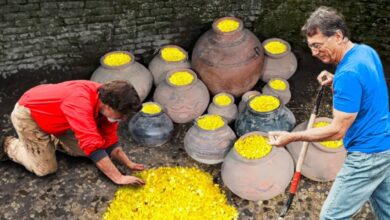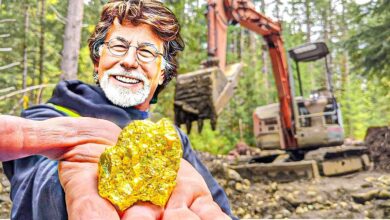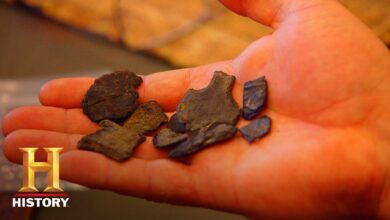The Curse of Oak Island: Expert Shares Shocking Rose-Head Spike Details (Season 8) | History
The Curse of Oak Island: Expert Shares Shocking Rose-Head Spike Details (Season 8) | History

Hello everyone, hey everyone, Rick and Marty Laguna, along with members of the team, have gathered for a meeting via video conference with chemistry expert Dr. Christa Brousseau. She has an important update on a rose-head spike encrusted with a kind of concrete material.
Hey Jeff, check this out. That was found two weeks ago in the OC-1 spoils. Look at that head, a spike which has already been determined to predate the discovery of the original money pit.
So this is one of our favorite war rooms when the science can be brought inside of the war room and test results are given. We are grateful that Dr. Brousseau, again at our request, has done some testing of the so-called OC-1 spike.
Yes, I have the spike with me. And so we looked at the spike already, and then you asked me to look at the sort of aggregated material that was on the spike. When I did the elemental analysis of this cement-like layer, what I found is that the calcium content in particular is very low, which means this is inconsistent with either a natural or Portland cement, which would typically have a calcium content greater than 30 percent. Usually 40 to 60 percent is more typical.
So when I look at everything together, this looks more like a low calcium fly ash cement or coal ash cement than a natural or Portland cement.
Well, that cement is associated with the chapel vault, the Oak Island Treasure Company vault, and that’s important. I mean, it’s been sought after since the first 1897.
It was in the summer of 1897 when treasure hunters Frederick Blair and William Chapel drilled into what they reported to be a seven-foot-tall wooden box in the money pit at a depth of 153 feet that was encased in a kind of concrete. When they extracted their drill bit, they were stunned to discover not only traces of gold but also a piece of parchment paper bearing the letters “the eye.”
Unfortunately, as they began to dig in an attempt to retrieve what came to be known as the Chapel vault, the shaft flooded and caved in from what was believed to be a man-made booby trap.
Is it possible that this rose-head spike found in borehole OC-1 might be connected to the actual treasure vault believed to be buried deep somewhere in the money pit area?
The finding of this fly ash material is consistent with several stories. I mean, if you buy the whole concept of the money pit, it was designed to be flooded by somebody who wasn’t supposed to be there. Well, whatever you have deposited there, you don’t want to get wrecked, so you would construct a waterproof vault of some sort. Let’s say wood, with a coating of this fly ash mortar and then coated with clay. It could make a box that would be waterproof for, my guess, thousands of years.
Dr. Brousseau, do you have the data from the rosehead spike? I’m just curious.
Yeah, I do. So the rosehead spike—so the spike, that this part of this agglomeration came back—is iron’s clean, no manganese. Style of the spike is sort of pre-1790. The lack of manganese indicates pre-1840, and the iron does have some phosphorus, about 0.5. So about 60 percent of iron ore coming out of the UK has about greater than 0.2 phosphorus. So that’s sort of a central area where phosphoric iron tends to originate from throughout history.
The rosehead spike, dating to before the discovery of the money pit and possibly of British origin. Earlier this year, Rick, Marty, and the team investigated a stone structure some 200 yards north of the money pit on Lot 15. This is historically important. Archaeologist David McGinnis believes it could be a 16th-century British military pine tar kiln, one that he and fellow archaeologist Laird Niven also suspect might be connected to the construction of the original money pit.
Could this discovery be evidence that the team is not only close to locating the long-fabled treasure vault but perhaps also identifying who was behind the Oak Island mystery?
I feel like we’re playing a really difficult game of Clue, you know? I mean, it’s just mind-boggling.
Dr. Brousseau, we thank you very much, as always.
Yeah, for sure. It’s my pleasure. Hopefully, it’s helpful to you.
Excellent. Thank you very much. Bye, everyone.








